Onur Ozdemir
A 3D Probabilistic Deep Learning System for Detection and Diagnosis of Lung Cancer Using Low-Dose CT Scans
Feb 08, 2019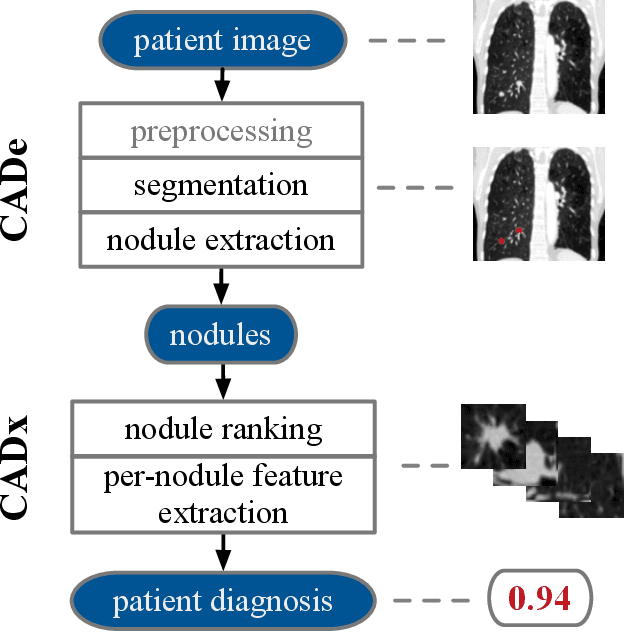
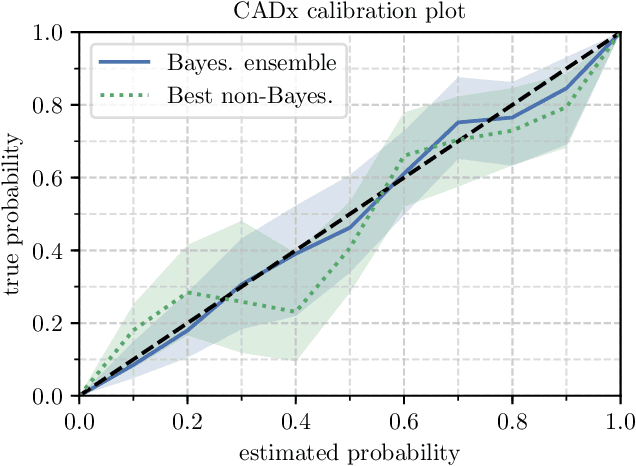
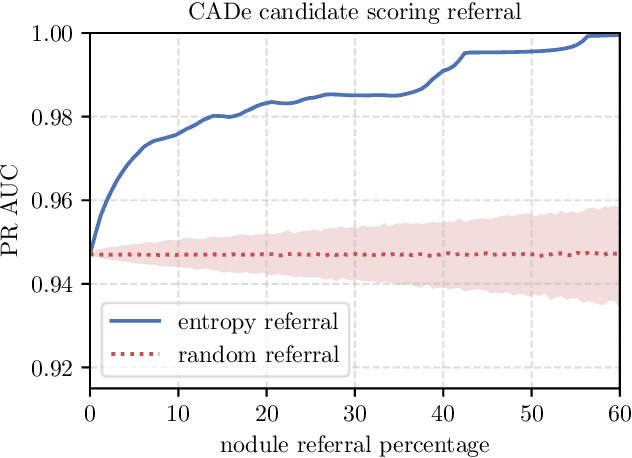
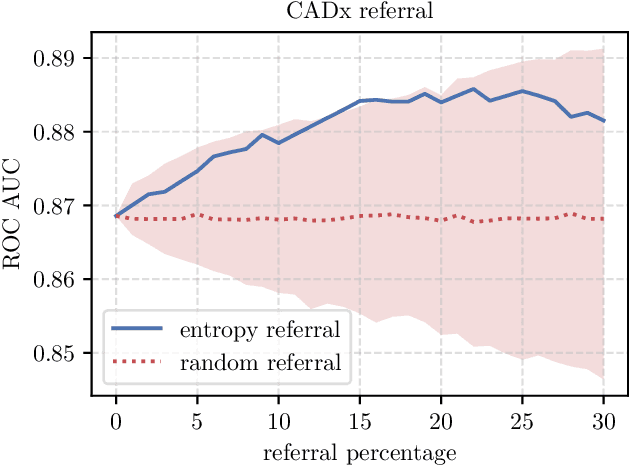
Abstract:We introduce a new end-to-end computer aided detection and diagnosis system for lung cancer screening using low-dose CT scans. Our system is based on 3D convolutional neural networks and achieves state-of-the-art performance for both lung nodule detection and malignancy classification tasks on the publicly available LUNA16 and Kaggle Data Science Bowl challenges. Furthermore, we characterize model uncertainty in our system and show that we can use this to provide well-calibrated classification probabilities for nodule detection and patient malignancy diagnosis. To the best of our knowledge, model uncertainty has not been considered in the context of lung CT analysis before. These calibrated probabilities informed by model uncertainty can be used for subsequent risk-based decision making towards diagnostic interventions or disease treatments, as we demonstrate using a probability-based patient referral strategy to further improve our results.
Learning to Repair Software Vulnerabilities with Generative Adversarial Networks
Oct 28, 2018
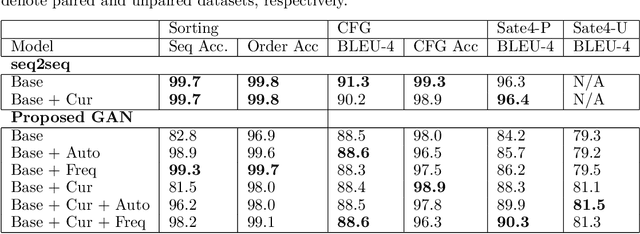
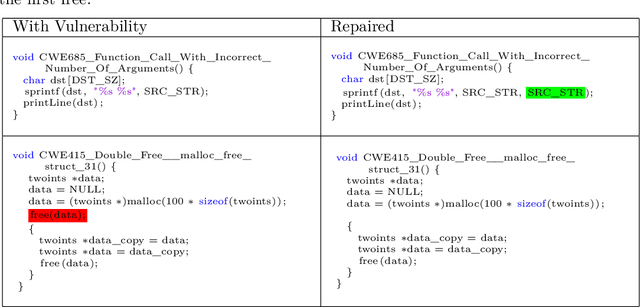
Abstract:Motivated by the problem of automated repair of software vulnerabilities, we propose an adversarial learning approach that maps from one discrete source domain to another target domain without requiring paired labeled examples or source and target domains to be bijections. We demonstrate that the proposed adversarial learning approach is an effective technique for repairing software vulnerabilities, performing close to seq2seq approaches that require labeled pairs. The proposed Generative Adversarial Network approach is application-agnostic in that it can be applied to other problems similar to code repair, such as grammar correction or sentiment translation.
Automated software vulnerability detection with machine learning
Aug 02, 2018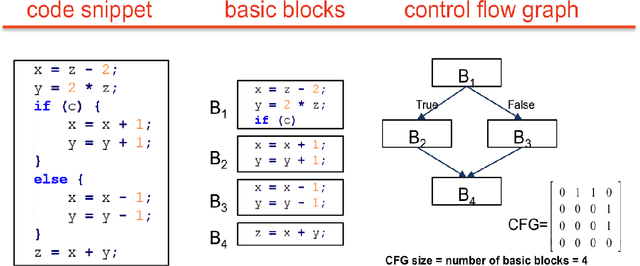
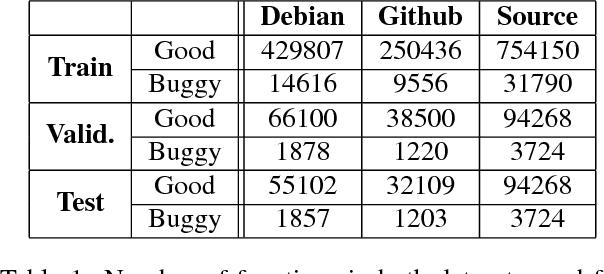


Abstract:Thousands of security vulnerabilities are discovered in production software each year, either reported publicly to the Common Vulnerabilities and Exposures database or discovered internally in proprietary code. Vulnerabilities often manifest themselves in subtle ways that are not obvious to code reviewers or the developers themselves. With the wealth of open source code available for analysis, there is an opportunity to learn the patterns of bugs that can lead to security vulnerabilities directly from data. In this paper, we present a data-driven approach to vulnerability detection using machine learning, specifically applied to C and C++ programs. We first compile a large dataset of hundreds of thousands of open-source functions labeled with the outputs of a static analyzer. We then compare methods applied directly to source code with methods applied to artifacts extracted from the build process, finding that source-based models perform better. We also compare the application of deep neural network models with more traditional models such as random forests and find the best performance comes from combining features learned by deep models with tree-based models. Ultimately, our highest performing model achieves an area under the precision-recall curve of 0.49 and an area under the ROC curve of 0.87.
Automated Vulnerability Detection in Source Code Using Deep Representation Learning
Jul 11, 2018
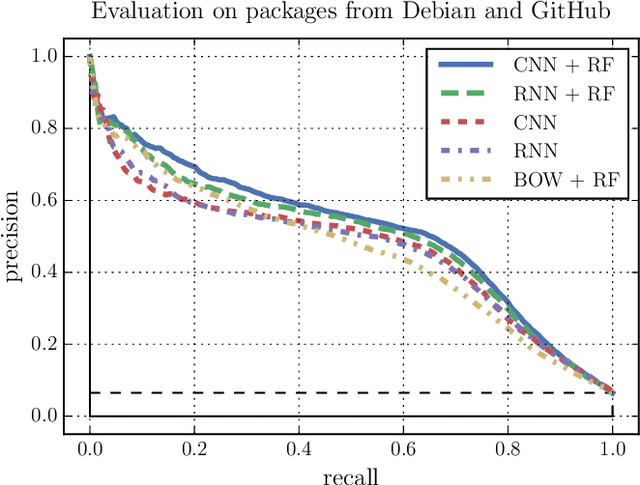
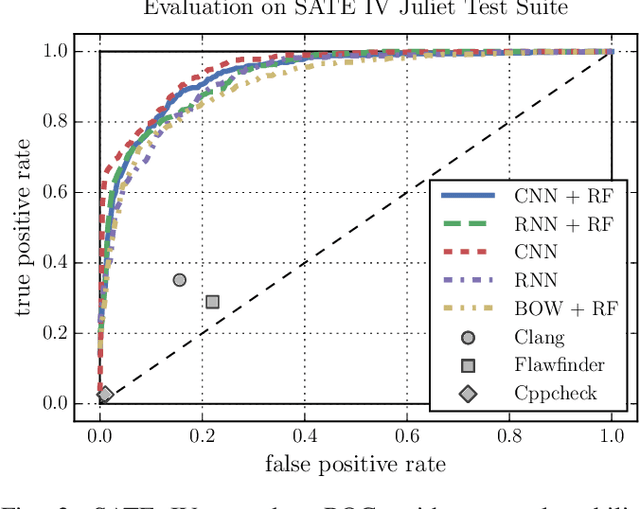
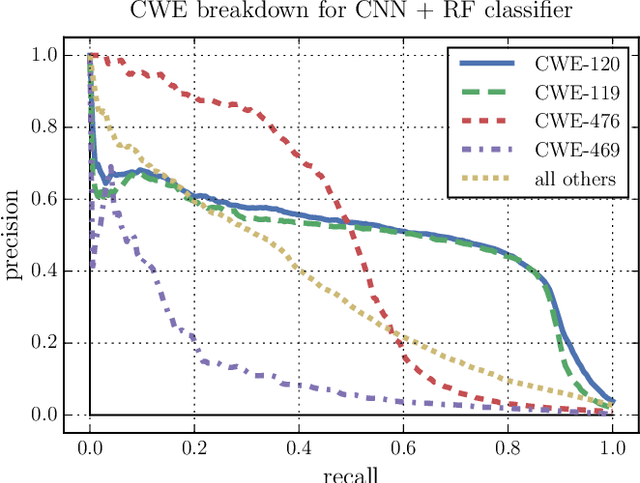
Abstract:Increasing numbers of software vulnerabilities are discovered every year whether they are reported publicly or discovered internally in proprietary code. These vulnerabilities can pose serious risk of exploit and result in system compromise, information leaks, or denial of service. We leveraged the wealth of C and C++ open-source code available to develop a large-scale function-level vulnerability detection system using machine learning. To supplement existing labeled vulnerability datasets, we compiled a vast dataset of millions of open-source functions and labeled it with carefully-selected findings from three different static analyzers that indicate potential exploits. Using these datasets, we developed a fast and scalable vulnerability detection tool based on deep feature representation learning that directly interprets lexed source code. We evaluated our tool on code from both real software packages and the NIST SATE IV benchmark dataset. Our results demonstrate that deep feature representation learning on source code is a promising approach for automated software vulnerability detection.
Propagating Uncertainty in Multi-Stage Bayesian Convolutional Neural Networks with Application to Pulmonary Nodule Detection
Dec 01, 2017
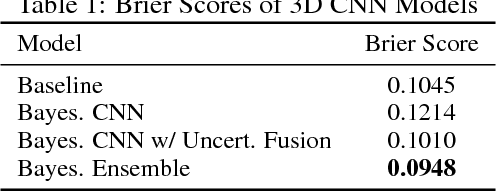
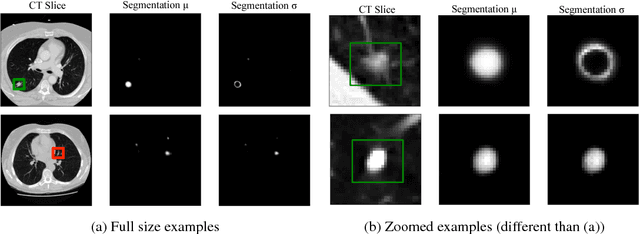
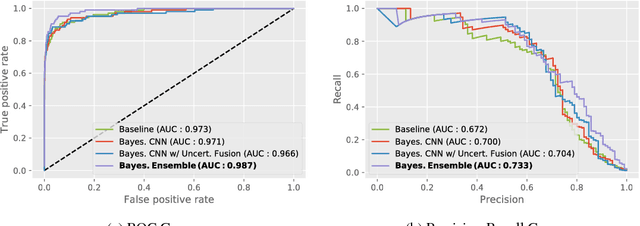
Abstract:Motivated by the problem of computer-aided detection (CAD) of pulmonary nodules, we introduce methods to propagate and fuse uncertainty information in a multi-stage Bayesian convolutional neural network (CNN) architecture. The question we seek to answer is "can we take advantage of the model uncertainty provided by one deep learning model to improve the performance of the subsequent deep learning models and ultimately of the overall performance in a multi-stage Bayesian deep learning architecture?". Our experiments show that propagating uncertainty through the pipeline enables us to improve the overall performance in terms of both final prediction accuracy and model confidence.
Hybrid Maximum Likelihood Modulation Classification Using Multiple Radios
Jun 11, 2013

Abstract:The performance of a modulation classifier is highly sensitive to channel signal-to-noise ratio (SNR). In this paper, we focus on amplitude-phase modulations and propose a modulation classification framework based on centralized data fusion using multiple radios and the hybrid maximum likelihood (ML) approach. In order to alleviate the computational complexity associated with ML estimation, we adopt the Expectation Maximization (EM) algorithm. Due to SNR diversity, the proposed multi-radio framework provides robustness to channel SNR. Numerical results show the superiority of the proposed approach with respect to single radio approaches as well as to modulation classifiers using moments based estimators.
 Add to Chrome
Add to Chrome Add to Firefox
Add to Firefox Add to Edge
Add to Edge